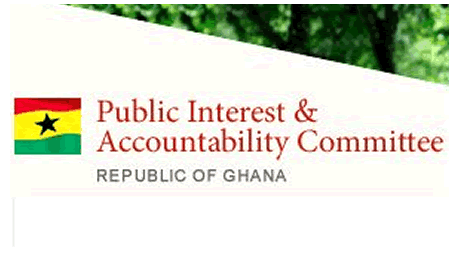Citizens must ensure governments use long term development plan – PIAC
 The Public and Accountability Committee (PIAC) says it is up to citizens of Ghana to ensure that current and successive governments use Ghana’s long term development plan as the basis for setting priorities for investment of Petroleum revenues.
The Public and Accountability Committee (PIAC) says it is up to citizens of Ghana to ensure that current and successive governments use Ghana’s long term development plan as the basis for setting priorities for investment of Petroleum revenues.
Mr Kwame Jantuah, Vice Chair of PIAC, said the 40-year development plan, being developed by the National Development Planning Commission (NDPC) had almost been finalised and was expected to be presented to President Nana Akufo Addo by next week.
Speaking at a public forum for the Shai Osudoku District at Dodowa in Accra, Mr Jantuah said findings of PIAC on the use of oil and gas revenues from 2011 to 2016, showed that while the Petroleum Revenues Management Act (PRMA) mandated the Minister to select four priority areas for the investment of oil revenue, such monies had been spent on areas outside the chosen ones.
The PRMA, he noted gives 12 priority areas, out of which the Minister is mandated to select four for investment focus.
These are agric and industry, science and technology, potable water, infrastructure development, social welfare, rural development, strengthening of institutions, housing industry, health care, environmental protection, public security and alternative energy sources.
The long term national development plan, once in place will take the place of priority areas and will set focus areas for development.
While the ideal situation will be for all governments that come to power work according to the plan, including drawing on it for their manifestos, Mr Jantuah noted that it was only a plan, and its enforcement was the responsibility of the people.
“It has to be binding, but who should force the government to use that plan? It’s the people,” he stated, adding that countries like Korea and Malaysia had used their national development plans to develop their countries to its current state, using the little resources they had.
He added that it was important for the people to understand the plan so that they pushed for its use by politicians.
For the period 2011 to 2016, the priority areas were agriculture modernisation, road and other infrastructure, amortization and capacity building. However actual spending had been spread across various sectors, some of which were not part of the priority sectors chosen.
Under transport infrastructure for instance, GH¢3,649,044.75 was spent on the bus branding project, while GH¢35,000,000 was used as MASLOC loanable funds under capacity building.
An amount of GH¢2,000,000 was also used as recapitalisation for EXIM Guarantee Company Ghana Limited, GH¢1,647,366 for Capitation grant and GH¢83,037,284 for GETFund scholarship, all under capacity building.
Mr Jantuah said there was the need to define capacity building and the kind of project that could be funded under capacity building, to ensure accountability.
PIAC schooled participants at the Public forum on PIAC’s work and how petroleum revenues had been used over the period, as part of a one week project visits and public meetings on the management of Ghana’s Petroleum revenue from 2011 to 2016.
Nene Tei Kwesi Agyemang Okukrobour V, Numersi of Dodowa, who chaired the Forum, commended PIAC for the initiative saying most of the participants did not know of the existence and work of PIAC and how petroleum revenues were being used and had been educated in the session.
He urged them to hold regular forum of that kind across the country to empower citizens with the information needed to keep officials accountable for the use of the revenues.
He also committed to encourage his colleague chiefs to liaise with PIAC to organise such forums in their localities.
Source: GNA
